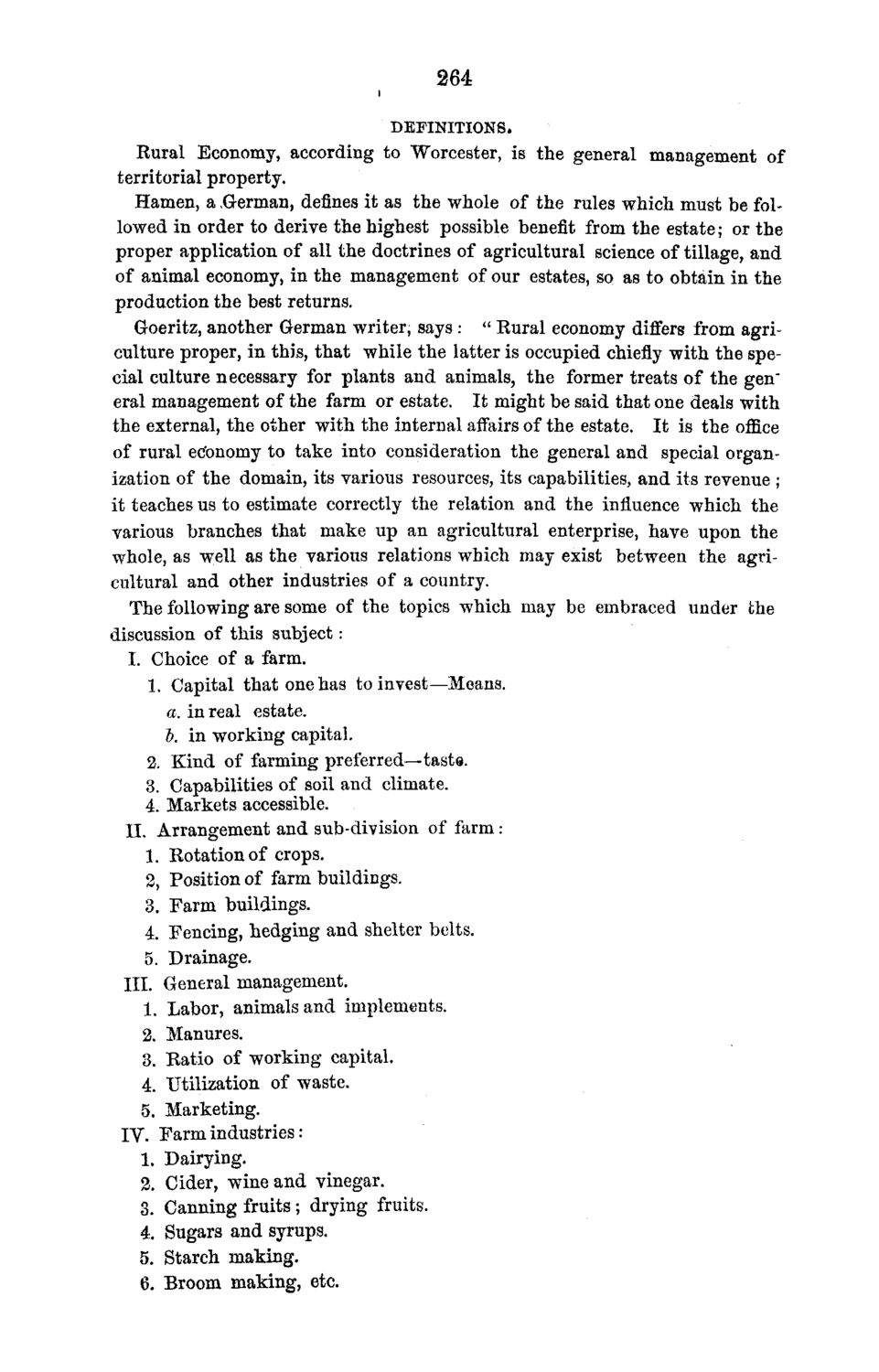| |
| |
Caption: Board of Trustees Minutes - 1870
This is a reduced-resolution page image for fast online browsing.

EXTRACTED TEXT FROM PAGE:
264 DEFINITIONS. Rural Economy, according to Worcester, is the general management of territorial property. Hamen, a .German, defines it as the whole of the rules which must be followed in order to derive the highest possible benefit from the estate; or the proper application of all the doctrines of agricultural science of tillage, and of animal economy, in the management of our estates, so as to obtain in the production the best returns. Goeritz, another German writer, says : " Rural economy differs from agriculture proper, in this, that while the latter is occupied chiefly with the special culture necessary for plants and animals, the former treats of the gen" eral management of the farm or estate. It might be said that one deals with the external, the other with the internal affairs of the estate. It is the office of rural economy to take into consideration the general and special organization of the domain, its various resources, its capabilities, and its revenue ; it teaches us to estimate correctly the relation and the influence which the various branches that make up an agricultural enterprise, have upon the whole, as well as the various relations which may exist between the agricultural and other industries of a country. The following are some of the topics which may be embraced under the discussion of this subject: I. Choice of a farm. 1. Capital that one has to invest—Means. a. in real estate. b. in working capital. 2. Kind of farming preferred—taste. 3. Capabilities of soil and climate. 4. Markets accessible. II. Arrangement and sub-division of farm: 1. Rotation of crops. 2. Position of farm buildings. 3. Farm buildings. 4. Fencing, hedging and shelter belts. 5. Drainage. III. General management. 1. Labor, animals and implements. 2. Manures. 3. Ratio of working capital. 4. Utilization of waste. 5. Marketing. IV. Farm industries: 1. Dairying. 2. Cider, wine and vinegar. 3. Canning fruits; drying fruits. 4. Sugars and syrups. 5. Starch making. 6. Broom making, etc.
| |